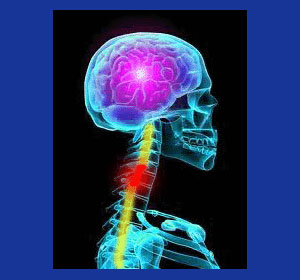
Cervical syringomyelia is a very serious spinal issue that involves the atypical accumulation of fluid or the formation of a cyst inside the spinal cord. This fluid or material can increase pressure inside the tracts of the spinal cord and cause permanent neurological damage, as well as subsequent functional dysfunction. Patients who demonstrate this condition are diagnosed with the formation of a spinal syrinx.
Syrinx formation is still a greatly misunderstood phenomenon, even though medical science has identified several main contributors to its occurrence. Worse still, modern medicine has limited treatments available to help syringomyelia patients and the few that exist generally have side effects that can rival or even surpass the condition itself. Therefore, patients who are diagnosed with a spinal syrinx often feel quite helpless, as their therapy options are undeniably restricted in both scope and efficacy.
This discussion details spinal syrinx formation in the cervical spine. We will examine why syrinx formation occurs, how patients are diagnosed and how treatments are rendered using a variety of practices and approaches to care.
Cervical Syringomyelia Facts
Syringomyelia can be a congenital condition or might be developed over time or after a particular life circumstance, such as traumatic injury or spinal surgery. Neither variety is inherently worse than the other, nor will either variety accurately predict how the condition will progress or the symptoms that might occur over time.
Congenital syrinx formation is usually related to the demonstration of Arnold–Chiari malformation, but might also be linked to other significant spinal abnormalities, such as irregularities with the kyphotic curvature, scoliosis or vertebral slippage. Some cases are idiopathic and seem to occur for no particular reason.
Acquired spinal syrinx formation can follow trauma to the spine, such as an injury or a surgical intervention. A syrinx can also develop due to changes in the spinal structure over time, such as the development of atypical curvatures of many varieties, the development of spondylolisthesis, the growth of spinal cysts or tumors of cancerous or benign types, or for idiopathic reasons, as well.
Syrinx formation can be symptomatic or asymptomatic. Some syrinx examples worsen with time, while others improve or even resolve organically. Of all the possible spinal irregularities displayed in humans, syringomyelia is one of the most unpredictable and difficult to manage medically.
Syringomyelia Causes
As mentioned above, many patients are born with a spinal syrinx as a congenital problem or might develop one at anytime during life due to a congenital defect in the spinal anatomy. The most common of these contributory factors include Arnold–Chiari malformation, scoliosis and hyperkyphosis.
Acquired versions of syringomyelia can come from any type of spinal injury, including car accidents, sporting accidents, acts of violence, falls and surgical damage. Many syrinx issues can be traced to spinal trauma that occurs long before the syrinx formed. This seems to point to syringomyelia as one of the most prevalent types of delayed onset neck pain, since the condition can form literally years or even decades later.
Other developed cases can be related to arachnoiditis, severe CSF infection, or the acquisition of structural problems in the vertebral column that mirror those found in congenital forms of syringomyelia, with the addition of others, namely scoliosis, hyperkyphosis, hyperlordosis, spondylolisthesis, tumor or cyst formation or any issue that changes the pattern of typical spinal fluid circulation.
Cervical Syringomyelia Symptoms
Syringomyelia has no inherent symptoms. Some patients are completely asymptomatic and remain so, despite the presence of a syrinx. Other patients have mild, moderate, severe or extreme symptoms which often do not exactly correlate to the size of the syrinx. Furthermore, symptoms might remain static, but most cases come and go, change in expression and location or otherwise follow variable patterns that make treatment a challenging proposal.
The higher up in the spine a syrinx forms, the worse its potential symptomatic activity will be, since these expressions have the ability to affect more of the anatomy. The highest levels of spinal syrinx formation can become fatal, by interfering with neurological processes that are needed to sustain life.
Typical symptoms of syringomyelia include pain in the location of the syrinx or general back and torso pain. Patients might suffer weakness and numbness in the upper or lower limbs unilaterally or bilaterally. Patients might suffer partial paralysis conditions that can be temporary or permanent. Neurological interference and damage to the spinal nerves might instigate sexual dysfunction, the inability to stand, incontinence or a wide range of other extremely debilitating concerns.
Syringomyelia Diagnosis and Treatment
Syringomyelia can be positively diagnosed using particular forms of advanced medical imaging, including MRI, CT and myelogram evaluations. These tests can also help to determine what factors, if any, can be positively identified as being contributory to the formation of the syrinx.
Treatment is a delicate process and curative attempts are mostly fruitless. In surgical emergencies, doctors may elect to operate on the spinal cord in an attempt to save life or functionality. However, most of these techniques are crude and provide unsatisfying outcomes. Even when surgical interventions go well, the reformation of the syrinx is a very common postoperative event and many times, the reformed syrinx becomes larger and more symptomatic than the original. Therefore, most patients who require treatment are managed conservatively, using a range of practices including physical therapy, the application of powerful drugs and the possible introduction of complementary therapies, such as acupuncture or chiropractic to form a combined care approach.
Neck Pain > Neck Pain Causes > Cervical Syringomyelia






